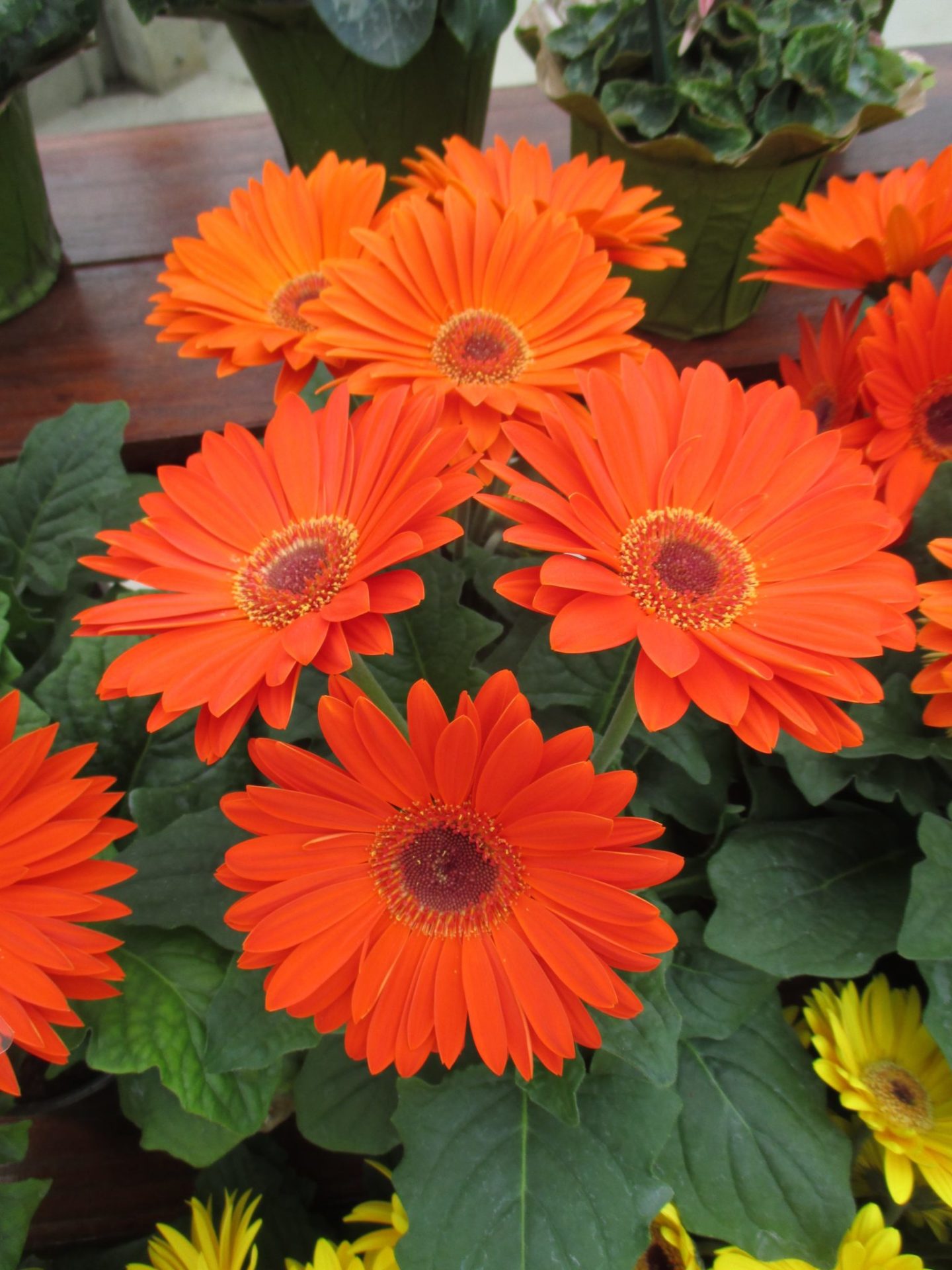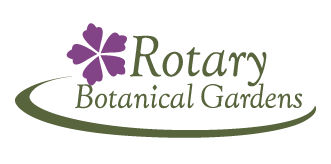
Orange in the Garden – Don’t be Shy!

With more dreary weather on the way, an examination and appreciation of orange is in order to “warm” things up. Directly above is an orange theme (annuals) that we planted at RBG a couple of years ago. It sure glowed and I love telling the story on how some visitors, after viewing this vivid display, said either, “I never liked orange but now I do…” or “I used to like orange but now I don’t!…”. Regardless, orange has impact in the garden and words such as cheerful, bold, vibrant and energetic might be used by those that see orange for its undiluted energy and enthusiasm. Some folks simply don’t like orange (in general) and that’s ok. Appreciation of any color (or color combination) is certainly subjective but a concern out in the garden is that some people aren’t sure how to use orange and might be nervous about incorporating a color that has such a “big personality”! The famous English garden designer, Gertrude Jekyll, loved to use orange in the garden and it is one of my favorite colors personally. The difference between describing orange can run the spectrum of brash and garish versus warm and calming. This depends on lots of factors but the intent of this blog is to explore the potential of orange out in the gardens and minimize what should’t be a contentious consideration for the use of this outgoing color.
Orange is a secondary color created by the combination of red and yellow. Blue is the complementary color for orange although finding true blue companions in the garden can be challenging as “blue” seems to be an arbitrary designation for a color range that includes purples and other similar tones. Orange does combine well though with purple and maroon (see examples at the bottom of the blog). Keep in mind that there are many shades of orange which have creative (and frequently delicious) names such as apricot, pumpkin, tangerine, cantaloupe, creamsickle, butterscotch and terra cotta. Regardless, orange can sizzle in the full sun garden and continues to glow on overcast days. As evidenced in photos below in this blog, orange foliage does exist but isn’t typically the “Crayola” orange you might find with select flowers. An intensity of orange/red thru bronze creates an “orange-ish” contribution and keep in mind that the intensity of orange foliage is frequently dependent on the season and exposure to a certain amount of sunlight. Oranges in the deciduous autumn landscape are appreciated by most during that season of transition. Combining orange and lime brings out the yellow tones in both colors while orange and white in tandem offer a certain visual freshness. It’s interesting to note that orange is thought to promote sociability and creates a warm and welcome atmosphere. The use of orange is recommended near patios, decks and other areas “of congregation” out in the landscape. Orange as an seasonal accent in the garden can be accomplished throughout the year with early spring bulbs (tulips) transitioning to summer annuals and perennials and finally the winter months can include red/orange stems (dogwoods) and colorful, persistent fruits on select woody plants. Container combinations using orange as an “ingredient” are limitless and consider the repetition of orange tones throughout a garden space to lead the eye and offer unity. Consider the value and impact of orange in your life (and garden)! The photos in this blog represent a minor smattering of “orange opportunities” for consideration.

MiniFamous® Uno Orange million bells (Calibrachoa hybrida ‘KLECA17328’) – annual

MiniFamous® Neo Orange + Red Eye million bells (Calibrachoa hybrida ‘KLECA16334’) – annual

Superbells® Dreamsicle® million bells (Calibrachoa hybrida ‘USCALI411-7’) – annual

ColorBlaze® Sedona Sunset™ coleus (Solenostemon scutellarioides) – annual

‘Inferno’ coleus (Solenostemon scutellarioides) – annual

Bonanza™ Flame Improved French marigold (Tagetes patula ‘PAS895917’) – annual

‘Marvel Orange’ African marigold (Tagetes erecta) – annual

Double Zahara™ Bright Orange Zinnia (Zinnia marylandica ‘PAS1246674’) – annual

‘Sunny Red’ sulphur cosmos (Cosmos sulphureus) – annual

‘Orange Porcupine’ pot marigold (Calendula officinalis) – annual

‘Mandarin Twist’ pot marigold (Calendula officinalis) – annual

I’CONIA ‘Upright Fire’ begonia (Begonia hybrida) – annual

Mistral® Double Orange begonia (Begonia boliviensis ‘KLEBG15006’) – annual

‘Fiery Orange’ begonia (Begonia hybrida) – annual

‘Autumn Embers’ begonia (Begonia hybrida) – annual

Rio Grande™ Orange ornamental purslane (Portulaca oleracea ‘KLEPO14824’) – annual

CANNOVA® Orange Shades canna (Canna x generalis) – annual

Twisted™ Orange cockscomb (Celosia cristata) – annual

‘Irish Poet’ tassel flower (Emilia javanica) – annual

‘Enorma Orange’ treasure flower (Gazania rigens) – annual

Majorette® ‘Orange Dark Eye’ Gerbera daisy (Gerbera jamesonii) – annual

Sweetunia® Orange Flash petunia (Petunia) – annual

Sunny™ ‘Arizona Glow’ black-eyed Susan vine (Thunbergia alata) – annual

‘Torch’ Mexican sunflower (Tithonia rotundifolia) – annual

‘Phoenix’ nasturtium (Tropaeolum majus) – annual

butterfly weed (Asclepias tuberosa) – perennial (above and in two compositions below)



Sombrero® Adobe Orange coneflower (Echinacea hybrida ‘Balsomador’) – perennial

‘Orange Queen’ barrenwort (Epimedium x warleyense) – perennial

‘Paprika’ coral bells (Heuchera) – perennial

‘Rio’ coral bells (Heuchera) – perennial

Fun and Games® ‘Hopscotch’ foamy bells (xHeucherella) – perennial

‘Orange Marmalade’ Martagon lily (Lilium martagon) – perennial





